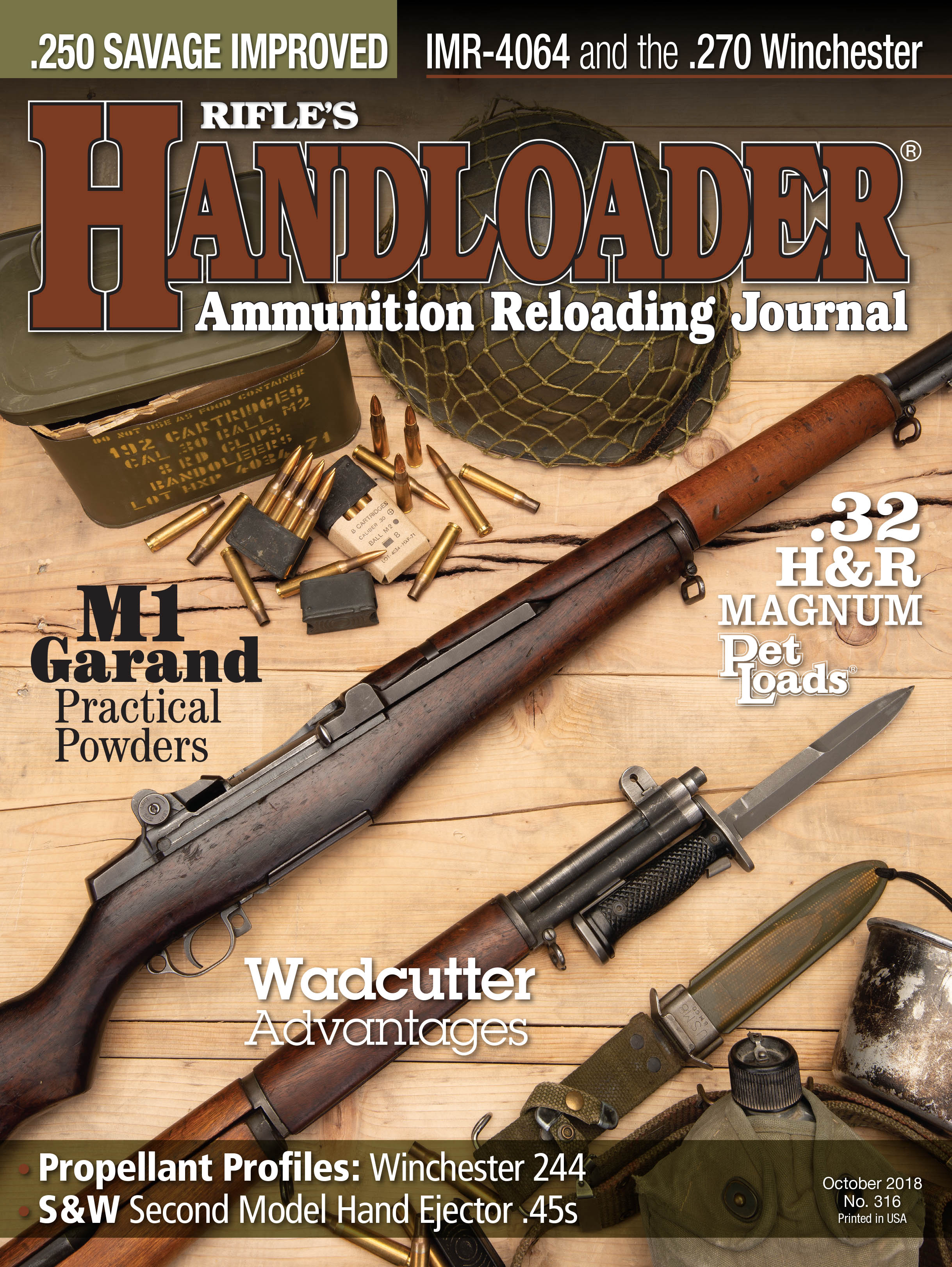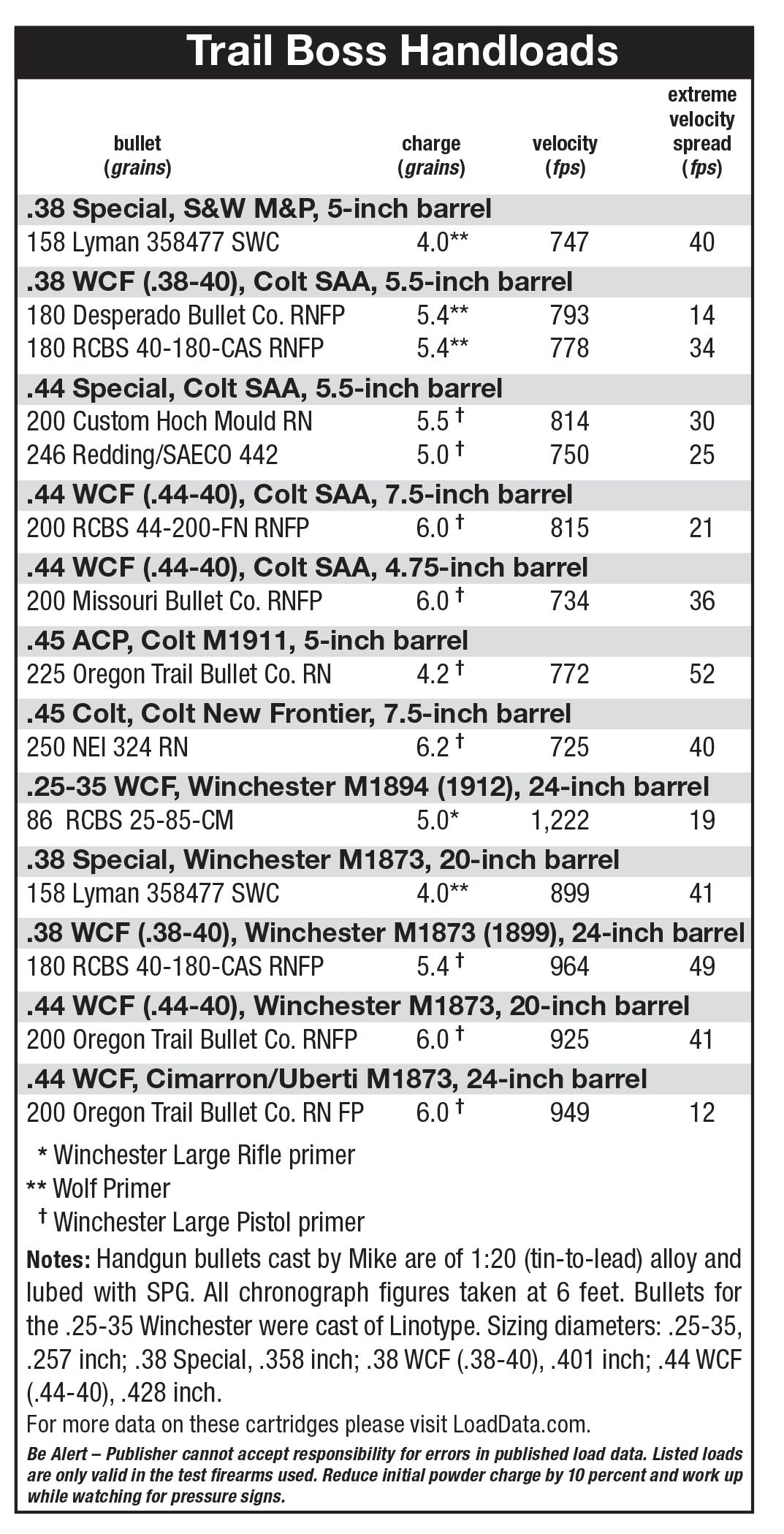Trail Boss
A Bulky Powder for Pistol and Rifle Loads
feature By: Mike Venturino | October, 18
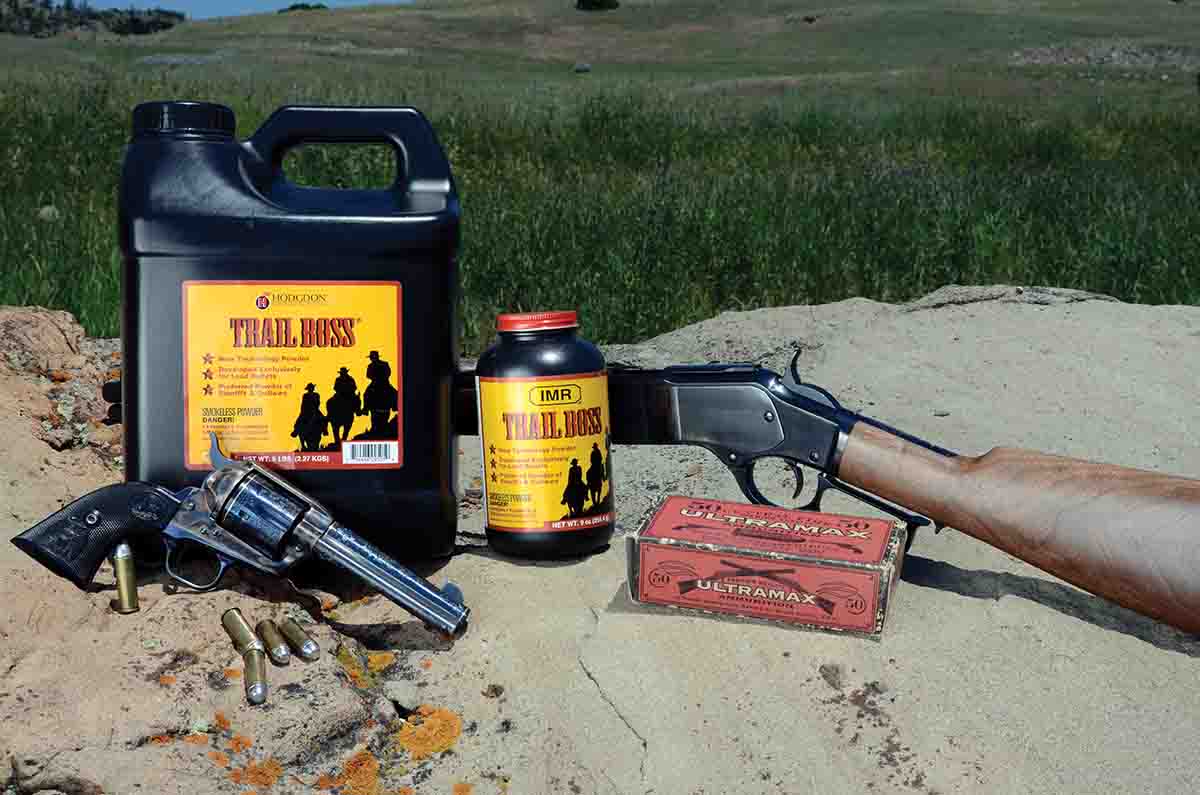
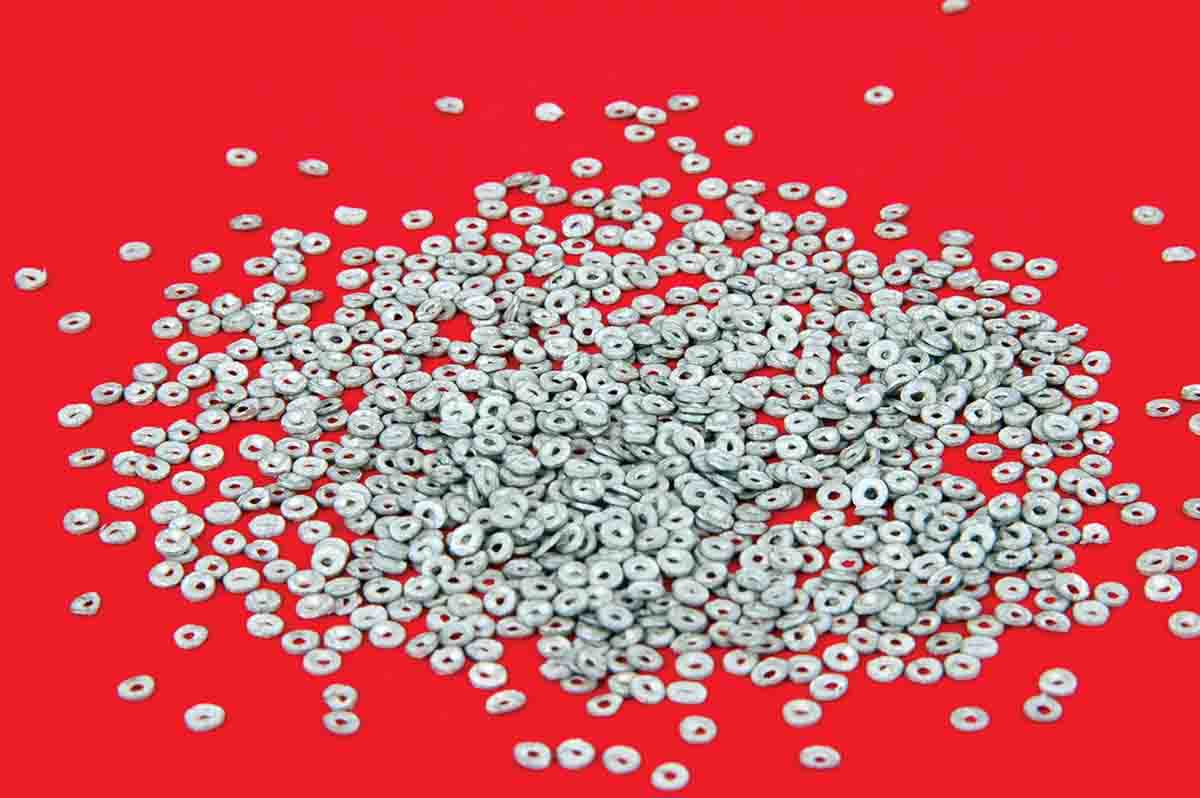
If my ego was stronger I would be apt to think that some things in the gun world were developed just for me. One is the game of black powder cartridge rifle competition shooting in which only lead-alloy bullets are allowed. Another is Western Powders’ Accurate 5744, which I consider a champ for most cast-bullet
rifle shooting. And of course, there is Trail Boss, which was specifically developed for use in relatively large-volume, pistol-size cases with lead-alloy bullets.
Trail Boss is manufactured in Australia by Australian Defense Industries (ADI). It is a single-base powder introduced in the U.S. in 2005. My opinion is that cowboy action shooters were primarily the target market for Trail Boss, but its applications have spread farther.
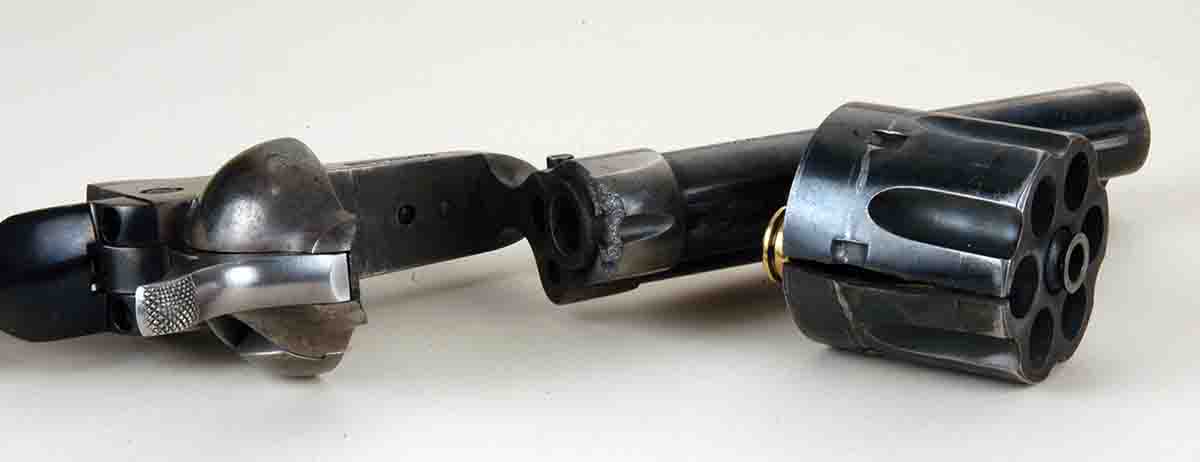
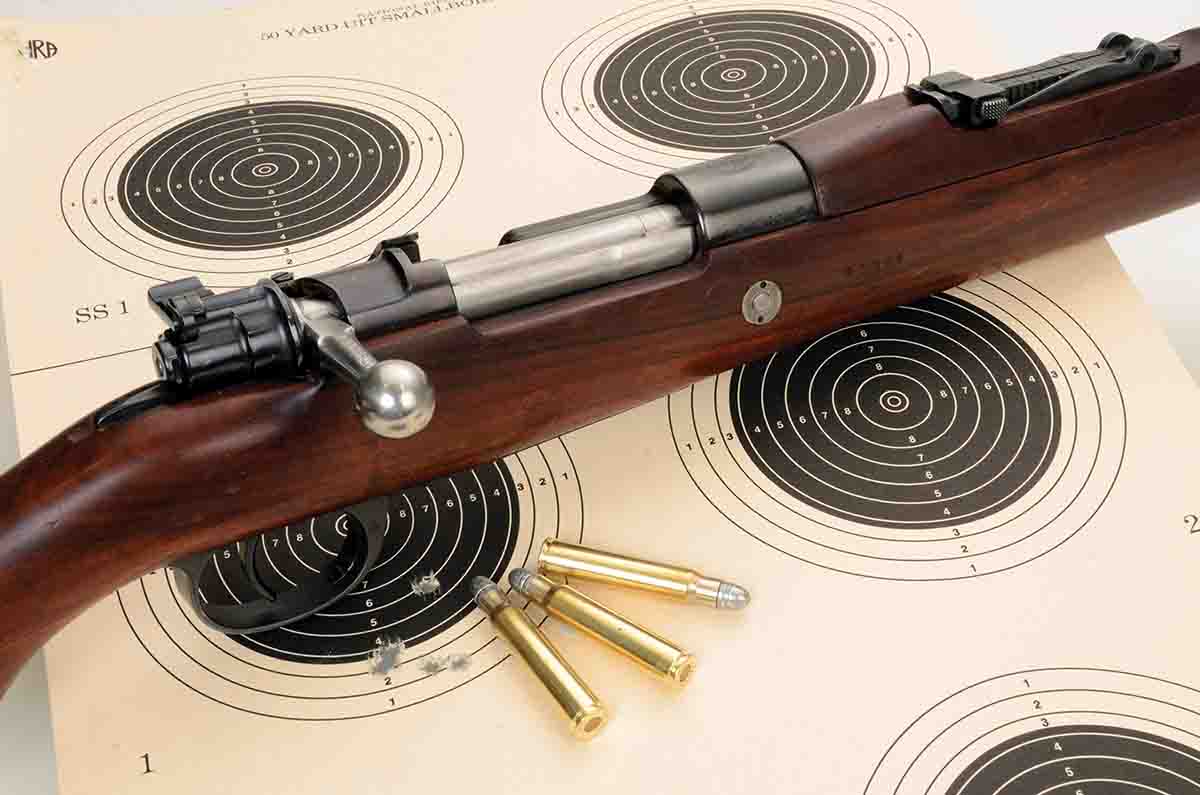
But double charging is not the only cross handloaders who like moderate- to big-bore revolvers must bear. Mistakes can be smaller but still harmful to shooter and firearm. More than 20 years ago
in one of my rushes to meet a deadline, I grabbed a can of Hodgdon Clays instead of Universal. The charge used would be moderate for the latter powder in my .45 Colt SAA, but when Clay was mistakenly substituted, two chambers of that fine revolver had bulged. It would be hard to make such a mistake with Trail Boss because of its unusual appearance. Luckily, the SAA was of the third generation, so the
Colt factory was able to replace its cylinder at a nominal charge. A friend experienced a similar problem with a nice first
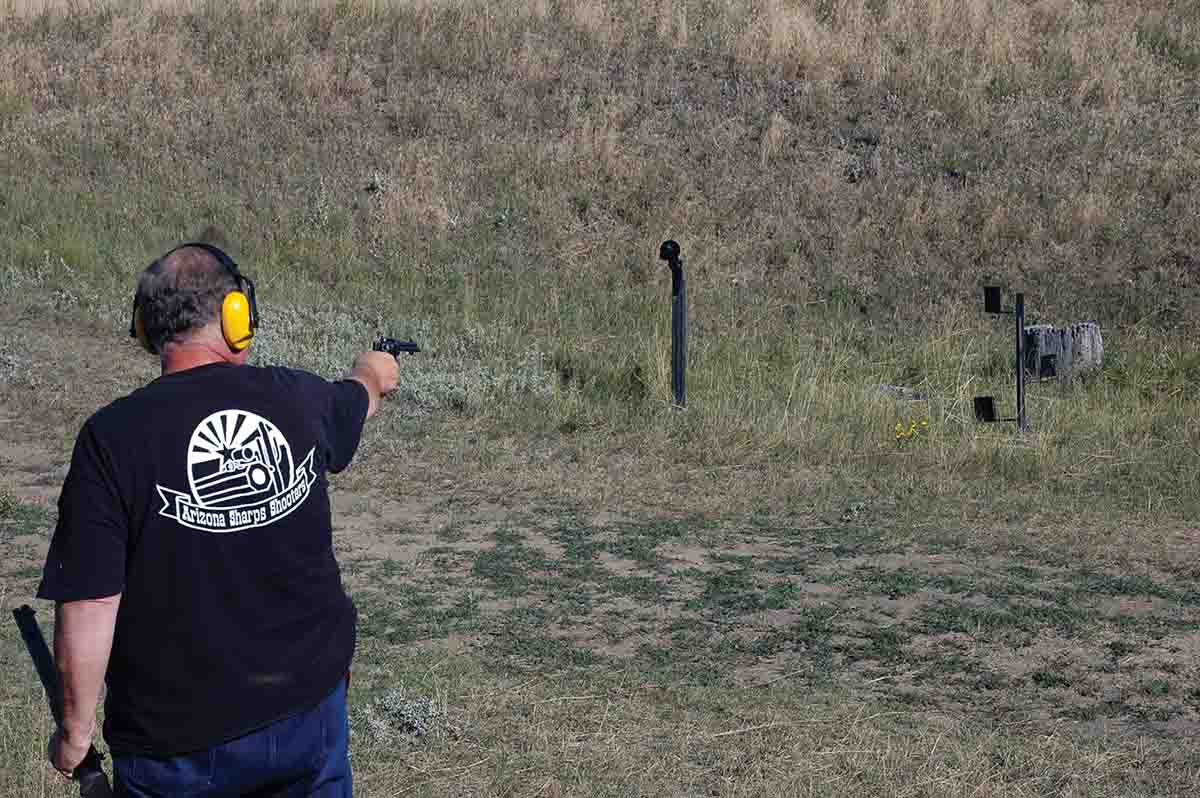
More recently I was loading .45 ACP with 5.4 grains of HP-38 under lead-alloy bullets on a progressive press with auto-indexing. With the auto-index feature, a double charge is doubtfully the reason a case head blew out, shattering the stocks of a World War II-era 1911A1. Did the powder bridge in the measure and allow one light charge and another that was too heavy and obviously dangerous? I will never know. My collection contains one 1917 and one 1918 vintage Colt Model 1911. I like to shoot them on occasion, but given their age they need not be subjected to hard use. After the stock-destroying incident I searched Hodgdon’s loading data website and, sure enough, it lists Trail Boss with
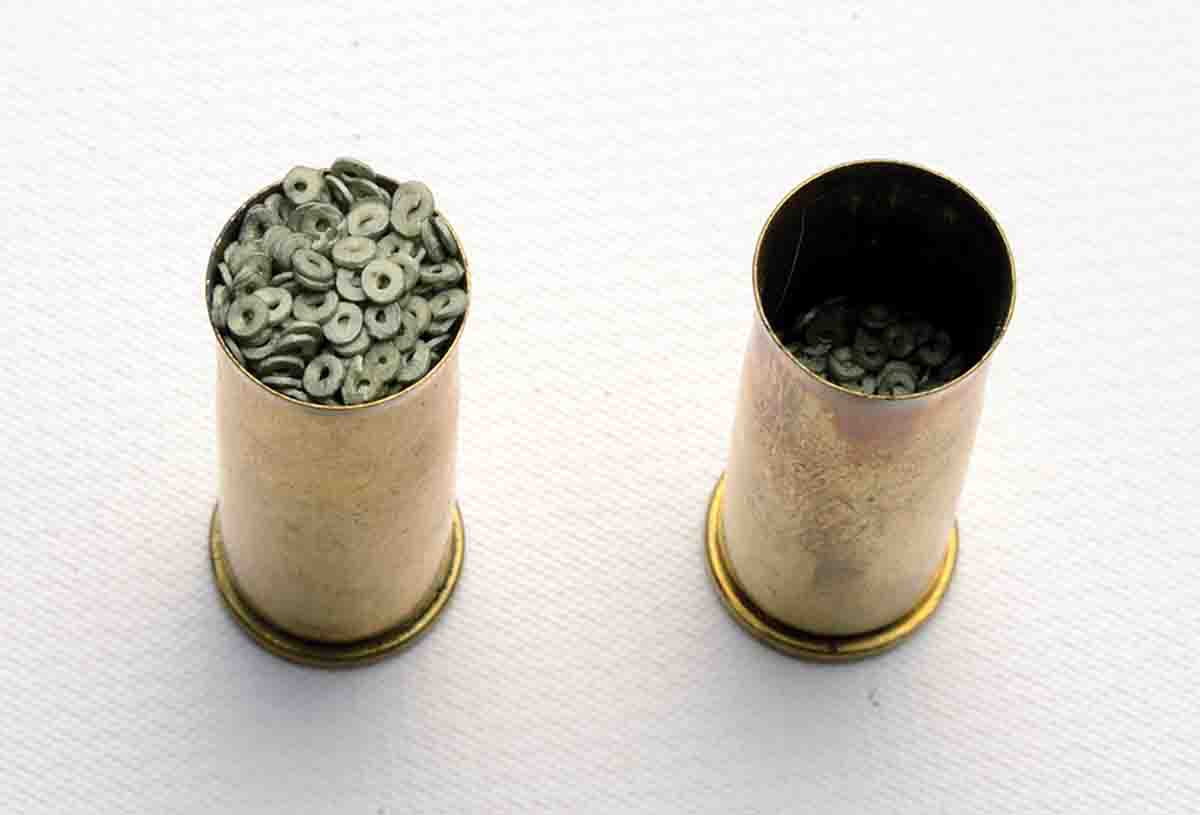
Anyone who has spent much time reloading large-volume handgun cases knows that smokeless powder orientation in the case at time of firing can be the culprit in ballistic variance. Here’s an especially noteworthy example considering factory ammunition for a caliber as small as .32-20: When friend Hank Williams Jr. visited some years back he brought with him a box of factory loads with 100-grain lead bullets and a Colt SAA .32-20 revolver. He loaded it with three rounds, handed it to me and said, “First shoot it uphill.” That’s safe to do at my place, so I did. The muzzle report was the customary loud blast of a .32-20 revolver. Next he said, “Shoot it level.” I did and the muzzle blast had a muffled sound more like a small bore shotgun. Last, it was aimed at the ground as if I was going to shoot a rattlesnake a few feet away. When I did the report sounded like pizzz. The bullet stopped a few inches into the Colt’s barrel with a clump of
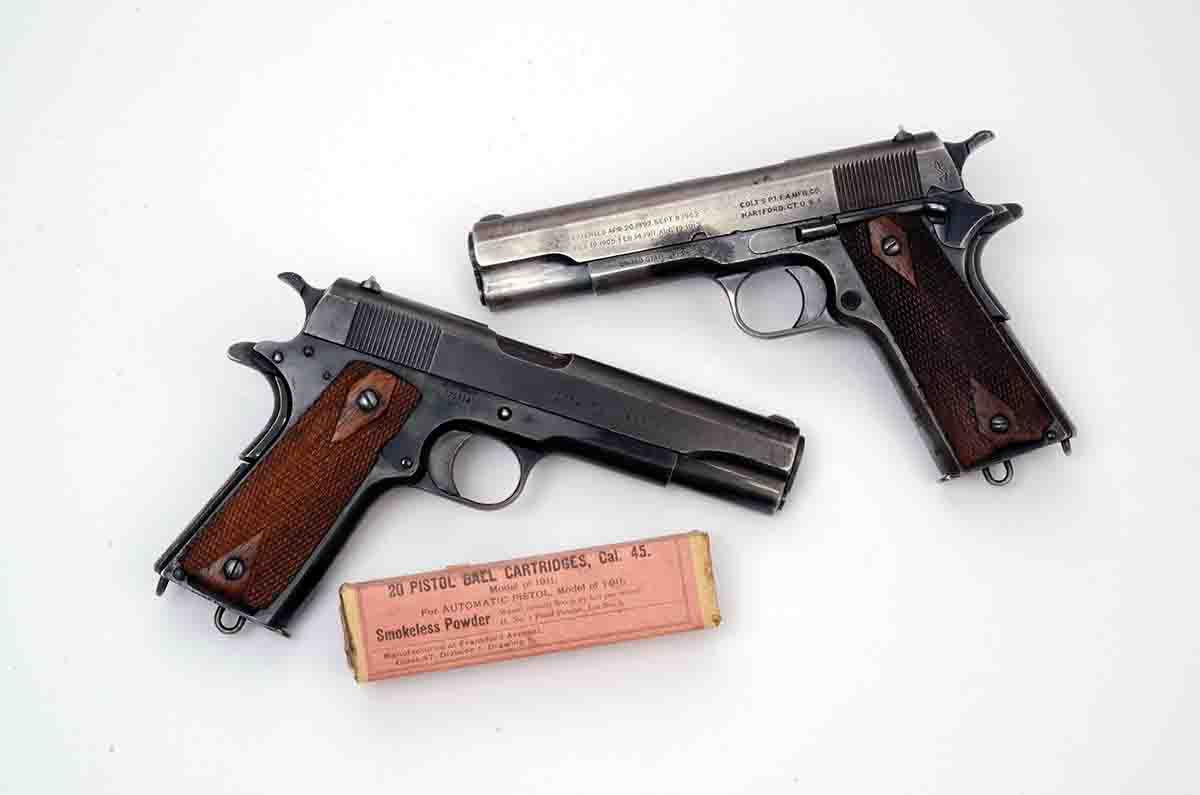
To say I was dumbfounded is an understatement, so I insisted we try it again in a different revolver. The same thing happened – and it happened every single time we continued the process. So something else handloaders benefit from with the use of Trail Boss, this most “fluffy” of all pistol powders, is ballistic uniformity.
This last point may be debatable: I think Trail Boss gives milder muzzle blast from handguns than do other powders that provide similar velocities in the same handguns. However, I freely admit that my Trail Boss loads in most cartridges provide velocities in the 700- to 900-fps range depending on barrel lengths, barrel/ cylinder gap, etc. I’ve noticed this with other powders. For example, 2400 in the .44 Magnum provides the same basic velocities but less muzzle blast when compared to H-110 and W-296.
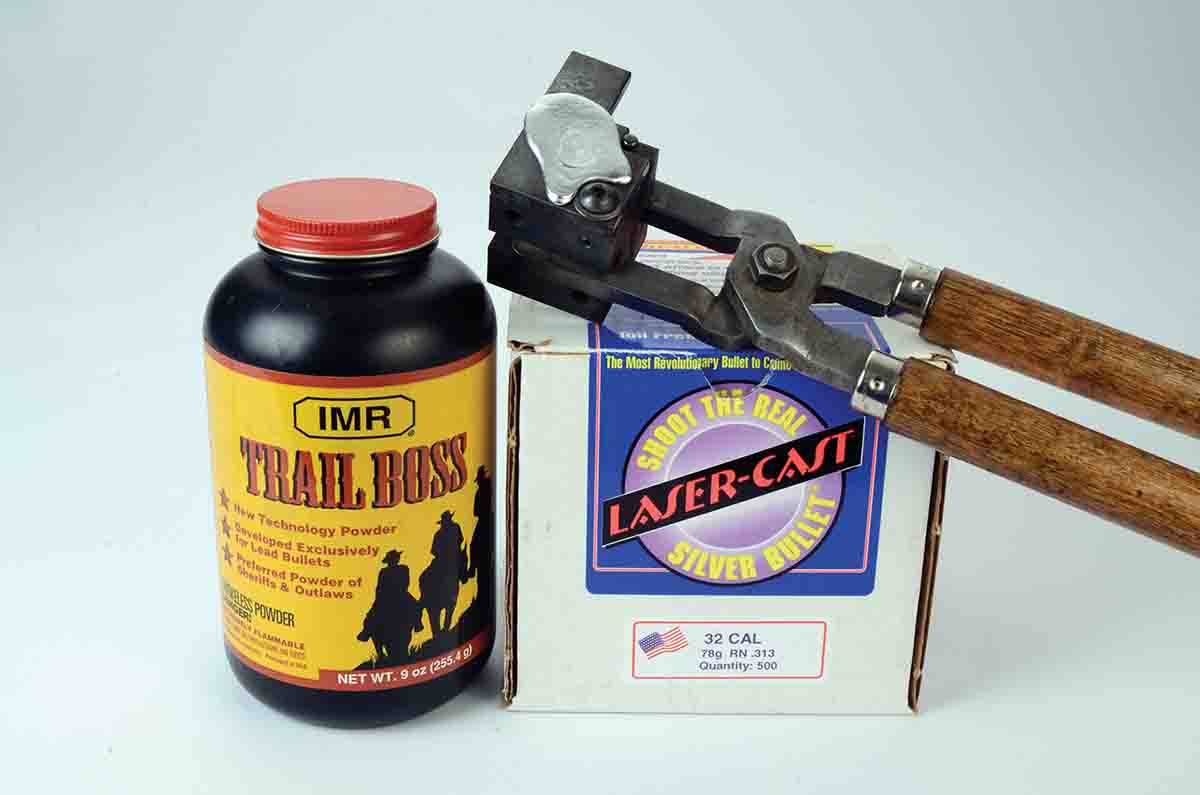
Trail Boss should not be considered when power is needed. It makes excellent practice ammunition for .357, .41 and .44 Magnums, but the most I would ask of it from any revolver barrel length is about 900 fps, and I would like to add that in my opinion, Trail Boss does not always deliver the very fine groups provided by some other fast-burning powders. Based mostly on machine rest handgun testing of powders, Bullseye, Titegroup and HP-38 or W-231 might make tighter clusters with all other factors equal. With that understanding, it is also my considered opinion that my favored revolvers will place bullets loaded over Trail Boss as closely together as I can achieve in handheld
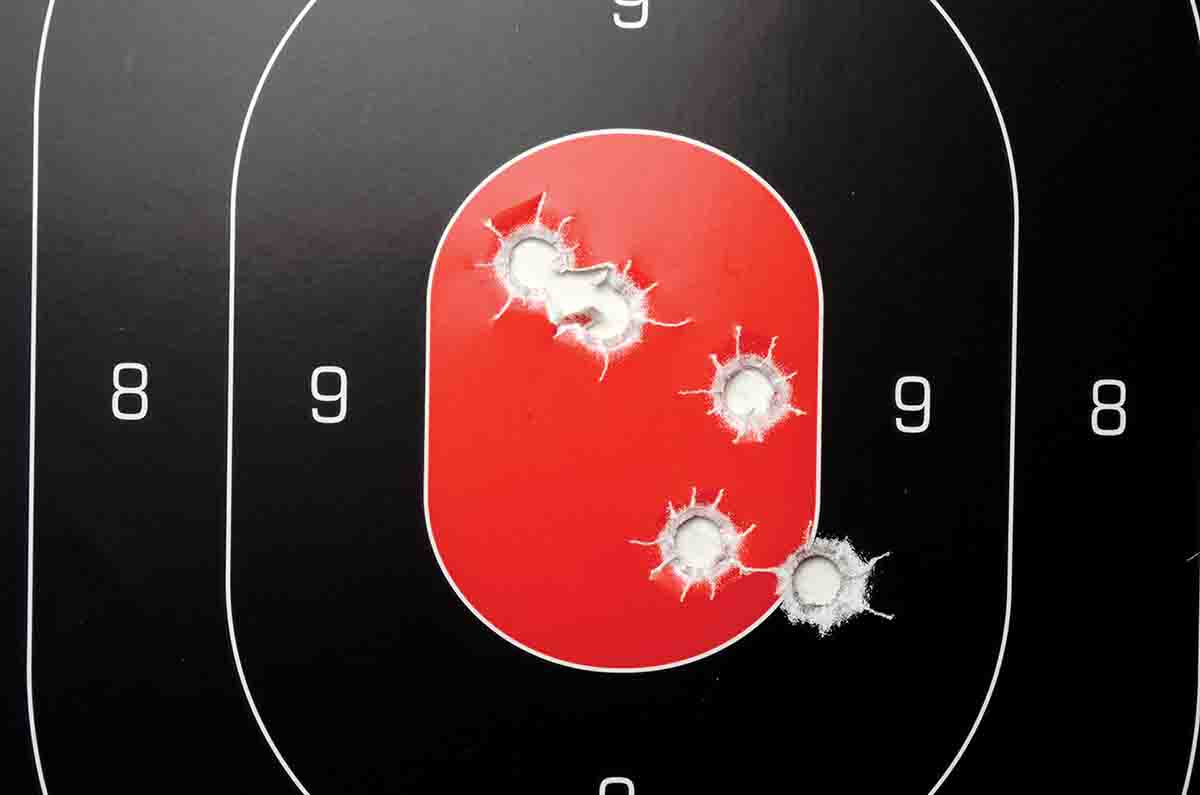
A natural question at this point would be, “How do velocities fair with Trail Boss when fired in pistol-cartridge lever guns?” Experience suggests velocity will jump about 150 to 200 fps from, say, a 5.5-inch revolver barrel as opposed to a 20- to 24-inch rifle or carbine barrel. Exact figures can be found in the accompanying load table. When shooting Trail Boss in leverguns, a bullet’s maximum velocity will likely be realized in shorter barrels. For instance, the increase in velocity from a Browning/Winchester Model 1873 with a 20-inch barrel as compared to a Cimarron/Uberti Model 1873 with a 24-inch barrel was only 24 fps.
Up to this point Trail Boss has been portrayed as a propellant for older, large-volume revolvers and/or levergun cartridges. It is not solely that. Hodgdon does have data for Trail Boss in very light loads for .38-55, .40-65 and .45-70. For example, with 405-grain bullets in .45-70 with a 24-inch barrel, a velocity of 1,007 fps is given. Charge weight is maximum at 13 grains, and pressure is 25,600 CUP. On the other end, the exact same pressure from a 24-inch barrel is said to be reached with 7.0 grains of Trail Boss over 250-grain bullets in the .38-55.
Lyman’s Cast Bullet Handbook, 4th Edition likewise lists very light charges of Trail Boss for the .30-30, .32-40 and .38-55. Its .38-55 charge with a 249-grain cast bullet from mould No. 375248 shows a maximum of 9.5 grains, a velocity of 1,148 fps and a pressure of 27,500 CUP. I have fired a charge of 5.0 grains of Trail Boss under 86-grain cast bullets in a friend’s Winchester Model 1894 .25-35. At 25 yards, groups ran about an inch or so, and velocity was in the range of 1,200 fps.
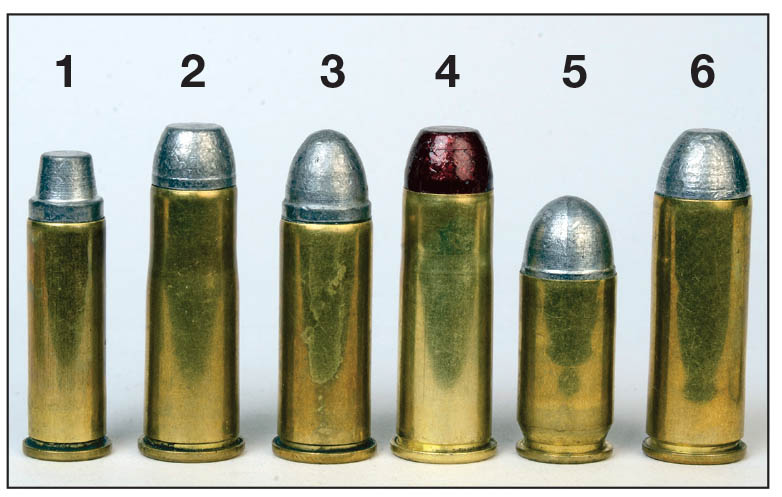
However, what is noted in the above paragraph is not tantamount to saying Trail Boss has no application in larger rifle cartridges. In Handloader No. 299 (December 2015), I reported on using a mild charge of 5.0 grains in a .30-06 with ultralight cast bullets. For instance, Oregon Trail 78-grain .30-caliber bullets meant for .32 Auto pistols were used in a .30-06. I also used 106-grain bullets for an 8mm Mauser with 8mm bullets that were cast in a special order RCBS mould for the 8mm Japanese Nambu pistol. The purpose of such “squib” loads would be to replace .22 rimfires for small game and plinking in the case of another ammunition shortage such as experienced nationwide a few years back. All that shooting was done with military surplus rifles dating from the World War II years, and results were very fine, with 25-yard groups sometimes making a tiny cluster of about an inch, but those were fired from rifles in likewise fine condition. Less satisfying results came with rifles produced during wartime emergency conditions.
Trail Boss does not have the broad application of some handgun powders such as Unique, but it shines when used as intended – in large volume revolver and/or levergun cartridges originally designed in the black powder era. It is a most welcome powder on my loading bench.


